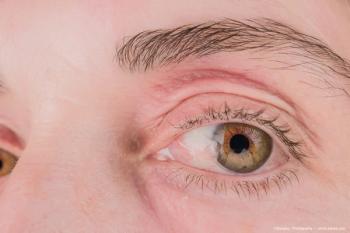
Best practices for injection protocols
No doubt, my retina colleagues are way ahead of me in considering this issue. Reducing the frequency of injections by developing longer-lasting therapeutic agents and reducing the per-injection risk by careful scrutiny of evidence to determine the best practice when it comes to injection protocols are two possibilities.
By Peter J. McDonnell, MD
A year or so ago, my friend’s brother lost vision from choroidal neovascularization due to
I thought of my friend’s brother while reading an article recently on the topic of post-injection endophthalmitis in patients with age-related macular degeneration (AMD)-Yes, it is possible for refractive surgeons to read and even comprehend literature on retinal diseases, provided the authors avoid using big words. In the study, use of pre- and post-injection antibiotics was left to the discretion of the treating ophthalmologist, and the article concludes that the use or nonuse of antibiotics did not appear to influence the risk of infection.
What caught my eye was the overall risk of infection and the authors’ take on that risk. Endophthalmitis developed after 11 of 18,509 injections (1 per 1,700; 0.06%) and in 11 of 1,185 patients (0.93%).
“Wow!” I thought. “One percent of patients get endophthalmitis when treated with anti-VEGF therapy for AMD. That’s a big problem.”
Depends on definition of ‘low’
The paper offered a distinctly different interpretation, starting off the conclusions section with “Rates of endophthalmitis were low . . . .”
“What would we do if we had a 1% rate of endophthalmitis complicating cataract surgery at our institution?” I asked one of my glaucoma colleagues (the actual rate is about 1 per 3,000).
He agreed we would need to close the operating rooms while we reviewed all of our protocols and looked for ways to drive down the number of infections. We agreed that a 1% risk of a potentially blinding complication like endophthalmitis seems, at best, worrisome.
Bottom line-neither of us thought the word “low” precisely captured our reaction to this piece of data.
Driving down the rate
There are three ways to look at this rate issue: per injection, per eye, and per patient. Obviously, the per-injection risk would be the lowest number, but to my way of thinking, a patient would be mostly impacted by the per-patient risk.
Because 80% of patients with AMD have bilateral disease (with women having a higher rate of bilateral involvement than do men, according to the Blue Mountains Eye Study), a lot of people will have injections in both eyes and the risk of endophthalmitis per patient, it seems to me, may logically be thought of as being closer to 2% for these folks (i.e., the risk that at least one of the two eyes will suffer this problem).
If that’s a legitimate way to think, then we should not be complacent but instead look hard for ways to drive down the rate.
On balance, the current use of intravitreal anti-VEGF agents is a dramatic improvement compared with the high risk of visual loss from AMD during my residency days-the risk of infection notwithstanding. My point is: There is room for improvement when it comes to endophthalmitis.
No doubt, my retina colleagues are way ahead of me in considering this issue. Reducing the frequency of injections by developing longer-lasting therapeutic agents and reducing the per-injection risk by careful scrutiny of evidence to determine the best practice when it comes to injection protocols are two possibilities.
But right now, my conclusion would be that “rates of endophthalmitis are high.”
References
· Meredith TA et al. Postinjection endophthalmitis in the comparison of age-related macular degeneration treatments trials (CATT). Ophthalmology. 2015;122:817-821.
· Wang JJ et al. Bilateral involvement by age related maculopathy lesions in a population. Br J Ophthalmol. 1998;82:743-747.
Newsletter
Don’t miss out—get Ophthalmology Times updates on the latest clinical advancements and expert interviews, straight to your inbox.













































.png)


